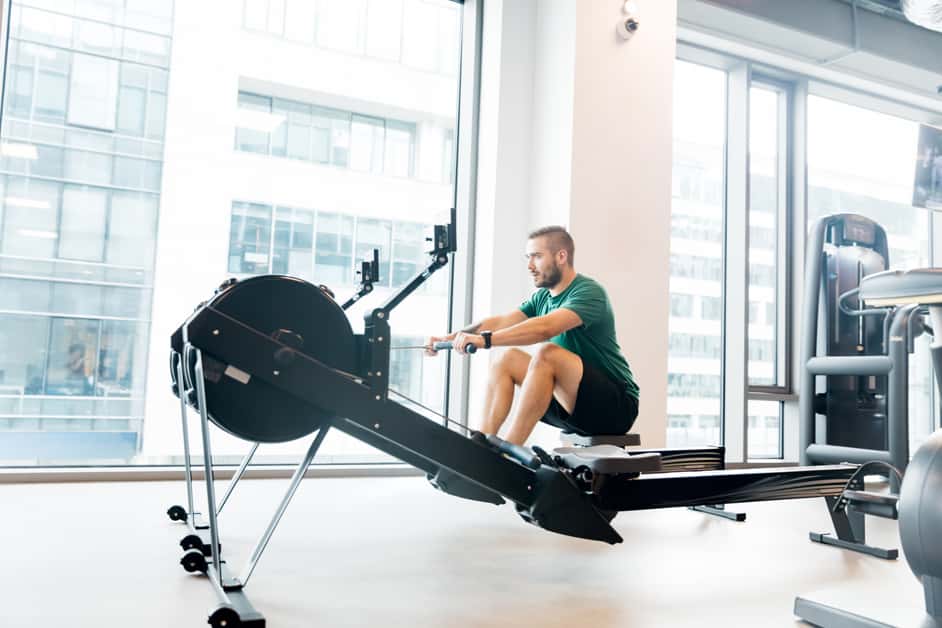Introduction
Runners are often familiar with joint pain, especially in the knees. Injuries can stop athletes from reaching their goals and slowing down their progress. A great way to prevent this is to pay attention to the exercises done during training.
Joint-friendly exercises are low-impact, causing minimal stress on joints and muscles. They help improve running performance and endurance. Rest is usually needed when recovering from injury, but joint-friendly exercises can help athletes overcome motion restrictions.
This guide will explain what makes an exercise joint-friendly, some examples and when they should be used:
Causes of Knee Pain in Runners
Runners often suffer from knee pain due to the impact running has on the joint. This can lead to a range of injuries, like ITB Syndrome, Runner’s Knee, and Patellar Tendinitis. To lessen the risk of knee pain, it’s important to comprehend the causes and focus on exercises that are kind to the joints.
Here, we’ll discuss the causes of knee pain in runners and how to tackle them with the proper exercises:
Overuse
Overuse is a frequent cause of knee pain for runners. Jogging on an uneven surface, running too far without rest, or going in the same direction repeatedly can lead to overuse injuries like tendinitis or stress fractures. When stress on the knee rises, inflammation can occur.
Poor running form or not stretching enough can also be a source of overuse injuries. If a runner uses the same muscles too much, they can put strain on other muscles and joints. Not stretching enough prior to exercise can also put excess strain on certain muscles.
To prevent overuse injuries, it is suggested that runners take regular breaks and stretch before and after physical activity. Moreover, runners should keep up a steady training plan so their bodies become used to more demanding runs instead of facing sudden intense runs which can cause pain or trauma in the knee.
Poor form
Maintaining good form when running is essential. Poor posture, weak core muscles, and tight hip-flexor muscles can all lead to knee pain.
Posture should be the first thing to address. Many runners have a tendency to lean too far forward or twist their hips, which throws off knee alignment. Improving posture can reduce knee irritation.
Weak core muscles cause instability in the pelvis and spine, which is especially important when running on slopes or uneven terrain. If the core muscles are not strong enough, they cause extra movement at the hips which can strain the knees. Exercises such as planks, squats, lunges, back bridges and high-knees can help.
Tight hip-flexor muscles can also contribute to knee pain. Weak gluteal muscles can create an imbalance between the thighs and pelvis, putting extra stress on the joints. Exercises such as side leg raises and clamshells can help strengthen the glutes and reduce strain on the knees.
Weak muscles
Knee pain in runners is an oft-experienced issue. It is caused by weak thigh muscles (quadriceps) that can’t act as shock absorbers when running. This creates too much pressure on the knee joint.
The weakening of quads might be because of:
- Tight hip flexors
- Uneven leg length
- Tight ankle ligaments
- Tight calf muscles
- Weak core muscles
To help with this, it is important to do strengthening exercises. Focus on all main running muscle groups, like glutes, hamstrings, quads, calves and core muscles. Also, rest and foam rolling are essential for relieving pain due to overuse or injury.
Poor flexibility
Inadequate flexibility can cause knee pain in runners. This is because tightness from muscles and tendons puts extra pressure on the knee joint. Not just that, it can also cause changes in running form that worsen the area. For example, due to stiffness, individuals may over-stride and land with a heel-striking motion instead of the forefoot strike recommended for healthy running form. Studies have shown that this heel-striking increases mechanical wear and tear on the knee joint and can be a source of chronic pain.
Runners should incorporate a stretching program. This should be done before and after running, to promote optimal knee health. Pre-run warm ups should focus on dynamic stretches and cooldowns should involve less vigorous activities like yoga or foam rolling. Working towards greater flexibility will not just reduce knee pain, but will also improve overall running performance.
Joint-Friendly Exercises
Runners suffering from knee pain need joint-friendly exercises. These exercises can reduce pain and improve joint functioning. Exercise is key for runners. Some exercises are even special for providing relief from knee pain. This article will look at joint-friendly exercises which help runners with knee pain.
Strength Training
Strength training is a must for runners with knee pain. Building muscles around the knee joint gives it stability and prevents tissue damage. Stronger supporting muscles also reduce stress on the knee joint during a run.
Here are strength training exercises you can do:
- Planks: Core exercise for the abdominals, obliques, and glutes. Planks work multiple muscle groups at once.
- Lunges: Lower body exercise for the quadriceps and hamstrings. You can add more resistance with dumbbells, barbells or kettlebells.
- Squats: Great way to strengthen legs while improving balance and stability. Keep your back straight, chest lifted, and toes pointed forward.
Create a strength training routine tailored to your needs. Consult with a physical therapist first. Start slow and increase intensity gradually. This prevents overworking and reduces discomfort or risk of injury.
Plyometrics
Plyometrics, also known as “jump training“, is a type of exercise which involves muscle movements and stretching in an explosive manner. It’s great for runners who suffer from knee pain, as it can help strengthen the joints and make them more mobile.
Examples of plyometric exercises are single leg squats, box jumps, and frog hops. However, it’s important to do them with correct form to avoid injury. Newcomers should start with low-impact exercises first, as this will make sure the body can handle more challenging movements later.
Stretching
Runners with knee pain can benefit from stretching exercises. Dynamic and static stretches improve flexibility, reduce inflammation and improve range of motion.
Dynamic stretches, like walking lunges, skater jumps and arm circles, help with range of motion before running.
Static stretches target quads, hamstrings, glutes, calf muscles and hip flexors. These can reduce the risk of injury. Examples include:
- Standing quadriceps stretch
- Seated forward bend exercise
- Standing calf stretch
Be mindful of your body’s limitations when performing the exercises. Focus on lighter breathing to create a better mind-body connection. Regular stretching is key to optimal performance!
Balance Exercises
Balance exercises are important for anyone with joint injuries. They help improve joint stability and reduce the risk of falls. Exercises can vary but it’s best to start with simple ones and increase difficulty over time.
Examples include:
- Standing on one foot. Start with support then lift one foot off the ground and balance for 10-15 seconds. Increase difficulty by standing without support.
- Heel-to-toe walking. Walk from one end of a room to the other, heel first then toes. Keep an upright posture and focus on weight distribution for better balance.
- Hip drops. Begin in a chair with a broomstick as a handlebar behind your back. Raise your toes, engage your glutes and lower your pelvis before returning to the starting position.
Staying active is key for joint health. Balance exercises help joint mobility and wellbeing. Start slow and increase difficulty as you become more comfortable. With practice, you’ll see the benefits!
Benefits of Joint-Friendly Exercises
Knee pain? No worries! Joint-friendly exercises are a great way to stay active. They help reduce pain, plus strengthen muscles and ligaments. Making running easier and less painful.
Let’s explore the benefits for runners with knee pain. Yay!
Improved Strength and Flexibility
Strength and flexibility are vital for joint health. Strength training can give many benefits, like building muscles, reducing fat, and improved posture. Flexibility exercises are also important to reduce stiffness, and release tension in the muscles that attach to joints.
To gain the most from these exercises, focus on slow and controlled movements that involve multiple joints, such as squats with rotational presses. Machines are an obvious choice, due to the reduced risk of injury. However, studies show that free weights can offer better coordination between different muscles. Therefore, using a mixture of both machines and free weights can give you improved balance and coordination.
Reduced Risk of Injury
For a safe and successful exercise program, use proper form and movements. Joint-friendly exercises are low intensity and mimic natural body motions. This reduces the risk of injury. Add them to your routine to keep joints healthy and pain-free.
Choose joint-friendly exercises that fit your individual needs. If you have sensitive joints, skip high-impact activities like running. Instead, try modified strength moves or dynamic stretches. These are easier on the joints but still provide a good workout.
Always use correct form in any exercise, joint-friendly or not. Proper alignment will help protect vulnerable areas and keep your joints healthy. No injury or discomfort!
Improved Performance
Exercises that are joint-friendly are great for performance and avoiding overuse injuries. They strengthen muscles and tendons, lessening the load on joints and thus reducing knee pain. This also helps with running economy – you need less energy to cover the same distance, making you faster and able to run farther.
Moreover, this type of training increases range of motion. This means more muscle groups are used during running, improving your form. Moreover, better coordination between muscles and improved balance in the legs can be expected too. This makes stabilization easier while running on uneven terrain or while quickly changing direction, improving athlete performance and reducing the risk of slip or fall injuries.
Conclusion
Ultimately, relieving knee pain for runners is key. Joint-friendly exercises can provide assistance. Such exercises as aqua jogging, pool running, cycling, and strength training are a great help. They improve functionality, allow the runner to exercise while injured, and incorporate a range of stretches and movements.
Exercises do not need to be done in the gym. Restorative movements, such as yoga, can also increase mobility. Joint-friendly exercises are invaluable for those seeking knee pain relief.
Frequently Asked Questions
Q1: How can running with knee pain be managed?
A1: Running with knee pain can be managed with a combination of rest, joint-friendly exercises, and a slow return to running. Joint-friendly exercises such as swimming, cycling, and walking can help strengthen the muscles around the knee, reduce inflammation, and improve mobility. Taking a few days off from running to allow the knee to rest and heal is highly recommended.
Q2: What are some joint-friendly exercises for runners with knee pain?
A2: Swimming, cycling, and walking are all joint-friendly exercises that can help strengthen the muscles around the knee, reduce inflammation, and improve mobility. Other exercises such as core strengthening, yoga, and weight training can also be beneficial for runners with knee pain.
Q3: How often should joint-friendly exercises be done for runners with knee pain?
A3: How often joint-friendly exercises are done will depend on the severity and location of the knee pain. It is best to consult with a doctor or physical therapist to determine the best course of action. Generally, it is recommended to do joint-friendly exercises 2-3 times a week in order to strengthen the muscles around the knee and reduce inflammation.





